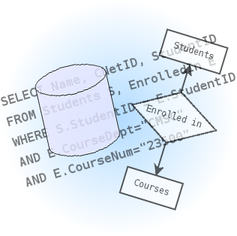this is where i was ...
SELECT culture FROM departments WHERE university = 'Leeds' AND school = 'computing';

In 2009/10 the School of Computing at the University of Leeds was offering two main degree programmes, in Computing, and Computer Science. There were also various Joint Honours combinations, along with a range of applied Computing programmes in the general area of Informatics. In addition, the School also provided a number of elective modules, available to all students in the University. There are also three taught programmes at Masters level.
The range of programmes offered changes over time, being tweaked to meet perceived student demand and the evolving interests in the School. Similarly, the content of the individual programmes changes, again being altered to match with the School's overall strategy. The "Computing" programme of today, for example, shares very little with that programme when it was first established in the mid-1990s.
All teaching in the School is "research-led", and a new set of degree programmes was introduced in 2008/09. These were quite innovative in a way, with all single subject programmes leading to a final research-based project that would occupy half a student's final year.
Herein developed a problem for those who believe that databases are fundamental to all aspects of Computing. There is no research to speak of in the School in databases, but databases are used in a lot of the research. Databases had traditionally been an important part of the School's degree programmes; there were compulsory modules in both of the first two years, and for a time options in the final year. But now databases did not really "fit" neatly anywhere.
So the teaching of databases has become a little nomadic. There is some data modelling in the first year, for a start. The second year is at almost its traditional strength, with the students spending about 10 of their 120 credits "doing databases". The main database module currently sits in the second year, occupying half of a 20 credit (one sixth of the year) module with graphics. This is an interesting arrangement; one interesting issue is whether or not there should be links between the two topics. The module is compulsory on all degree programmes.
So, for our present purposes, we see "Databases" being taught in the second year, with an emphasis that is probably typical. So far, so good. The interesting aspect of this context is the link (or otherwise) with Computer Graphics. For a start, realise that when the students took their final "database" exam, half that exam was actually about graphics ...
artefact
The external-facing web presence of the School shows how the degree programmes work. Round about this content there is plenty of stuff on culture and the overall aims of the programmes.
university of leeds | school of computing | disciplinary commons | tony jenkins
